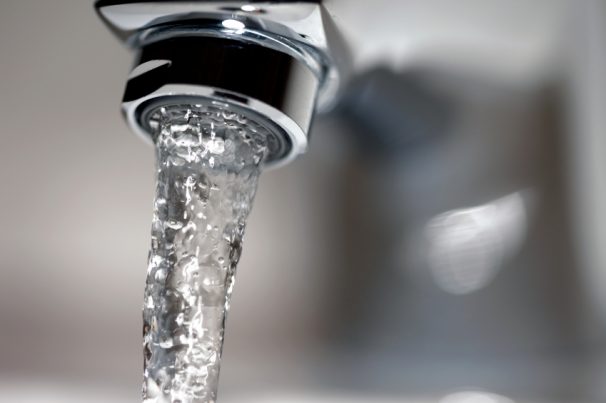
Dracunculiasis – causes, side effects and treatments at NaturalPedia.com
Thursday, March 08, 2018 by Zoey Sky
http://www.naturalpedia.com/dracunculiasis-causes-side-effects-and-treatments-at-naturalpedia-com.html

Dracunculiasis, or what is commonly called guinea-worm disease, is a crippling parasitic disease.
The disease is caused by Dracunculus medinensis, a long, thread-like worm. Dracunculiasis is only transmitted when individuals drink stagnant water contaminated with parasite-infected water fleas.
While dracunculiasis is rarely fatal, infected people may be incapacitated for several weeks. The disease often affects individuals who live in rural and remote communities that primarily depend on open bodies of water, like ponds, for their drinking water.
At least a year after infection, a painful blister will usually form on the lower leg. One or more worms will emerge from this blister, and the patient will feel a burning sensation. The infected leg will often be submerged in water to soothe the pain felt by the patient, and this will allow the worm/s to release thousands of larvae/baby worms.
The larvae released into the water will then reach the infective stage once they are consumed by tiny crustaceans or copepods, which are also known as water fleas. People swallow the infected water fleas by drinking contaminated water.
While the water fleas die in the stomach, the infective larvae are set free inside the human body. The infective fleas will penetrate the intestine wall, and they will migrate through the body. The fertilized female worm, measuring 60 to 100 centimeters (cm) long, travels under the skin tissues until it arrives at its exit point, like the lower limbs.
The worm will form a blister, and it will emerge at least 10 to 14 months after infection.

Known side effects of dracunculiasis
The side effects of dracunculiasis will manifest after the worm starts to break through the skin. A blister will form over the worm’s location. The area around the blister may itch, burn, or be inflamed, making it swollen, red, and painful.
Fluids released by the worm may cause an allergic reaction in the patient, and infected individuals may experience:
- Difficulty breathing
- Disabling pain
- An itchy rash
- Vomiting
When the blister opens, the worm will become visible. As the worm exits the body, the patient’s symptoms will subside. In most cases, the blister will heal once the adult worm leaves the body.
However, at least half of patients will develop bacterial infections around the opening for the worm. These infections may damage the joints and tendons near the blister, and it can also cause joint pain and other symptoms of arthritis.
Body systems harmed by dracunculiasis
Complications caused by dracunculiasis often involves the painful removal of the worm from the patient’s legs. If the wound isn’t cleaned properly, it can get infected.
Infected wounds may cause one or more of the following complications:
- Abscesses/boils
- Cellulitis/redness and swelling of the skin
- Sepsis/generalized infection
- Septic arthritis/joint infections that may cause the joints to lock and deform (contractures)
- Tetanus/lockjaw
If the worm breaks during removal, the patient may experience intense inflammation as the remaining part of the dead worm decomposes. This may cause more pain, swelling, and cellulitis.
While the death rate among patients with dracunculiasis is low, disability is a common outcome. Individuals may have trouble getting moving due to the pain and complications caused by secondary bacterial infections.
Disability due to complications from dracunculiasis may last until eight weeks or so, but it can also be permanent. Dracunculiasis often infects 10 percent of the world’s poorest communities, especially those without access to potable water.
Food items or nutrients that may prevent dracunculiasis
The following can be used to treat dracunculiasis:
- Castor – Apply the castor leaf paste over the infected wound to help extract the worm/s.
- Spiny bamboo – Wash the infected wounds with extract of spiny bamboo regularly. Another method is to heat the leaves and shoots of spiny bamboo in a pan, tie them in a piece of cloth, and use as a poultice.
- Thespesia Populnea – Apply carrier oil on fresh leaves of the plant then heat them. Tie the leaves on the area with the blister.
Treatments, management plans for dracunculiasis
No vaccine can prevent or treat dracunculiasis. However, prevention is possible via preventive strategies if the disease is on the verge of eradication.
These strategies include:
- Closely monitoring infections – Each case must be detected at least 24 hours of worm emergence.
- Ensure wider access to potable water – This will help prevent infection.
- Filtering water from open bodies of water
- Prevent transmission from each worm by treatment – The affected skin-area must be cleaned and bandaged regularly until the worm is completely removed from the blister.
- Prevent the contamination of drinking water – Never let the patient wade into water sources.
- Promoting health education and behavior change
- Vector control – Can be done using the larvicide temephos.
Where to learn more
- 62nd Annual Epidemic Intelligence Service (EIS) Conference
- Dutch scientists push for bugs to replace meat as food source
- How to Avoid Health Harming Parasites
- NaturalNews.com 1
- NaturalNews.com 2
Summary
Dracunculiasis, or what is commonly called guinea-worm disease, is a crippling parasitic disease.
The disease is caused by Dracunculus medinensis, a long, thread-like worm. Dracunculiasis is only transmitted when individuals drink stagnant water contaminated with parasite-infected water fleas.
The side effects of dracunculiasis will manifest after the worm starts to break through the skin. A blister will form over the worm’s location. The area around the blister may itch, burn, or be inflamed, making it swollen, red, and painful.
Complications caused by dracunculiasis often involves the painful removal of the worm from the patient’s legs. If the wound isn’t cleaned properly, it can get infected.
No vaccine can prevent or treat dracunculiasis. However, prevention is possible via preventive strategies if the disease is on the verge of eradication.
These strategies include closely monitoring infections. Each case must be detected at least 24 hours of worm emergence.There must be wider access to potable water to help prevent infection.
Sources include
Tagged Under: Tags: dracunculiasis





